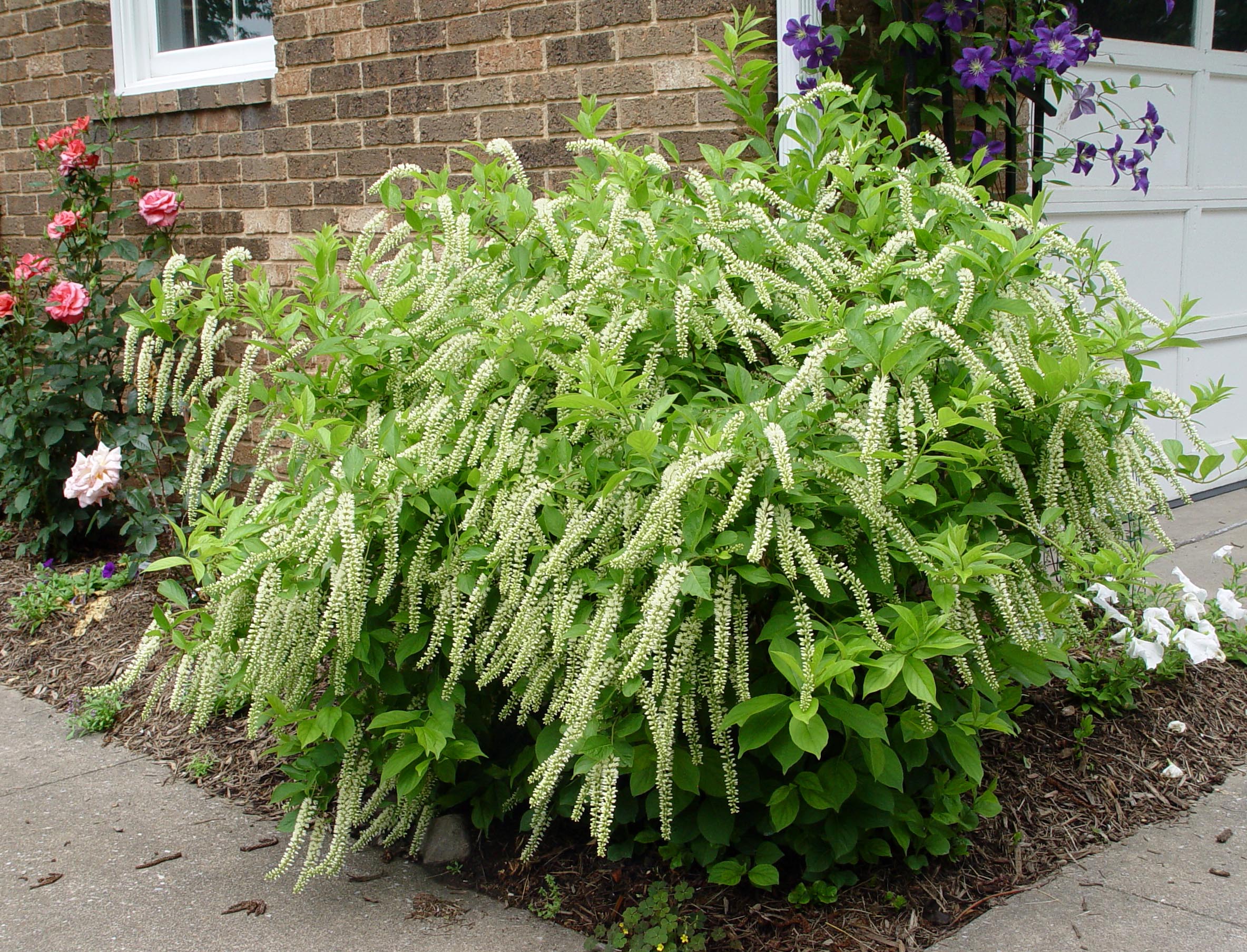

Virginia has many beautiful native perennials, trees, grasses, ferns and shrubs. These plants display a variety of colors and textures that are pleasing to the human eye and are essential for the preservation of our native ecosystem. Local wildlife species depend on native plants to survive. As more land is developed and native plant species are lost, it is becoming essential for the home gardener to incorporate native plants in the home landscape. By doing so, we support our native insects and pollinators, as well as the birds, invertebrates and mammals that depend on them for survival.
Two shrubs come to my mind as beautiful natives that are hearty and grow extremely well in a diverse variety of soil conditions. They are also pretty and provide nice color in the autumn months. These are also two of my personal favorites that I have incorporated in my home garden landscape. They are Callicarpa americana, commonly known as “American Beautyberry” and Itea virginica, or “Virginia Sweetspire”. It is quite refreshing to see these two shrubs planted and thriving, not only in home gardens, but in other popular gardens throughout the state. If you enjoy visiting the plantations along the James River you will often see these two beautiful natives on display. I was even pleasantly surprised to see a mass planting of Virginia Sweetspires in full bloom over the summer at one of our popular Virginia theme parks.
American Beautyberry is a deciduous shrub. The leaves are fairly bright green and it does best in planting zones 7-9. It can be planted in moist, sandy, rich, clay or acidic soils. It is versatile and can thrive in full sun as well as part shade. It is tolerant of heat as well as cold temperatures. This shrub can reach a height of up to 10 feet tall, though 3-6 feet is common. It is informal, fast growing and forms a “clump” shape. It produces small pink flowers that bloom in the summer.
While this shrub is not as showy as others during the warm months, it is simply spectacular in the fall. This is because of its beautiful purple berry clusters that mature in late summer and remain on until after the leaves fall off in the winter, or until the birds or deer eat them. The berries do drop off fairly easily, so cuttings of this shrub are not recommended for floral arrangements. However, the beautiful berries on this are so remarkable, it will stand out in your garden. One note, American Beautyberry self-sows fairy easily, so unwanted seedlings will need to be removed from your garden. This summer-bloomer will need to be pruned in the spring, and it is so hardy that it can be pruned back hard. Flowers and berries will produce on new growth.
Virginia Sweetspire is another hardy, deciduous native. It grows well in full sun as well as in shady areas. It can thrive in most soil conditions and even in poor drainage areas and swamps. This shrub grows well in planting zones 6-9 and averages 3-5 feet tall. One standout about Virginia Sweetspire is its beautiful cascade of white, curvy spike-like flowers that bloom in the spring. These flowers attract nectar loving birds, butterflies and insects. The shrub is rather informal, and will spread, forming hedge-like mounds. The leaves turn brilliant reddish purple in the autumn, and are quite pretty. There are cultivars on the market such as “Henry’s Garnet”, “Little Henry”, “Saturnalia” and “Merlot”. These are all fairly popular and relatively easy to find at garden centers. I use the “Little Henry” cultivar as a container plant in full sun around my patio and it does quite well. Pruning of sweetspires should be done after they flower in the spring, if desired. They bloom on old wood, so do not prune in the late fall through early spring, or you will cut off the buds.
American Beautyberry and Virginia Sweetspire are only two examples of native shrubs that can add beauty to your landscape. The choices are vast and native plants are increasing in popularity with growers, homeowners and commercial landscapers alike. So, if you are looking for a new plant addition to your landscape, why not try a native? Also remember, autumn is a great time to plant.
[“source=progress-index”]
| M | T | W | T | F | S | S |
|---|---|---|---|---|---|---|
| 1 | 2 | 3 | 4 | 5 | 6 | |
| 7 | 8 | 9 | 10 | 11 | 12 | 13 |
| 14 | 15 | 16 | 17 | 18 | 19 | 20 |
| 21 | 22 | 23 | 24 | 25 | 26 | 27 |
| 28 | 29 | 30 | 31 | |||


























